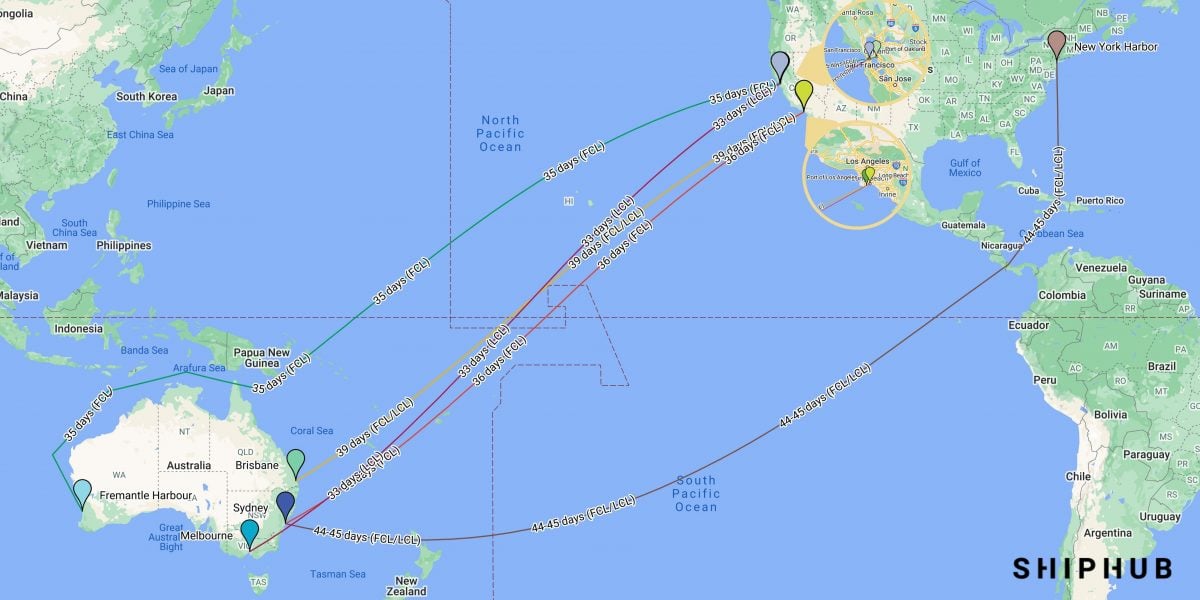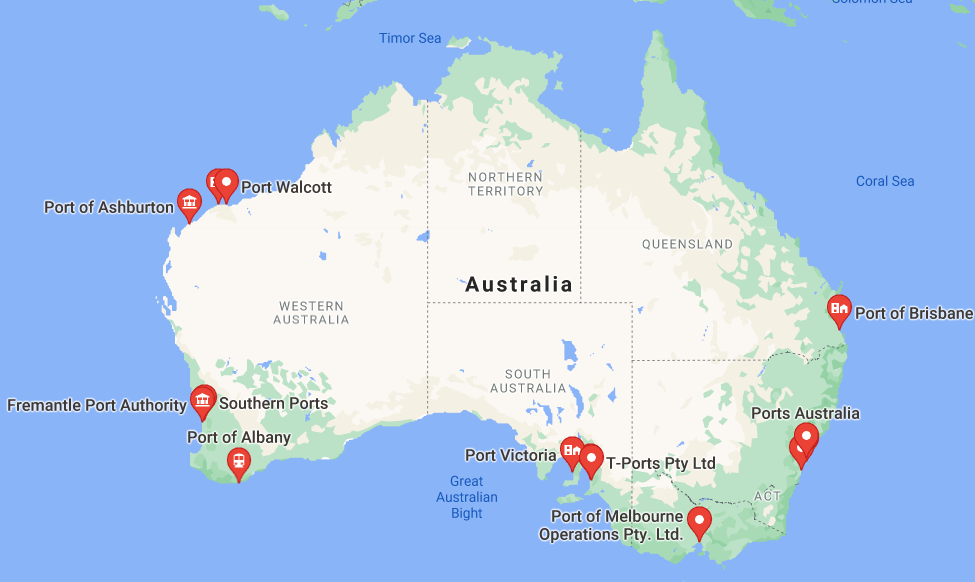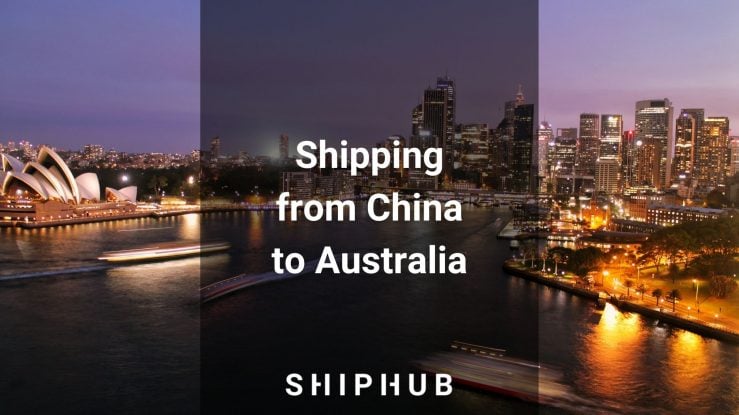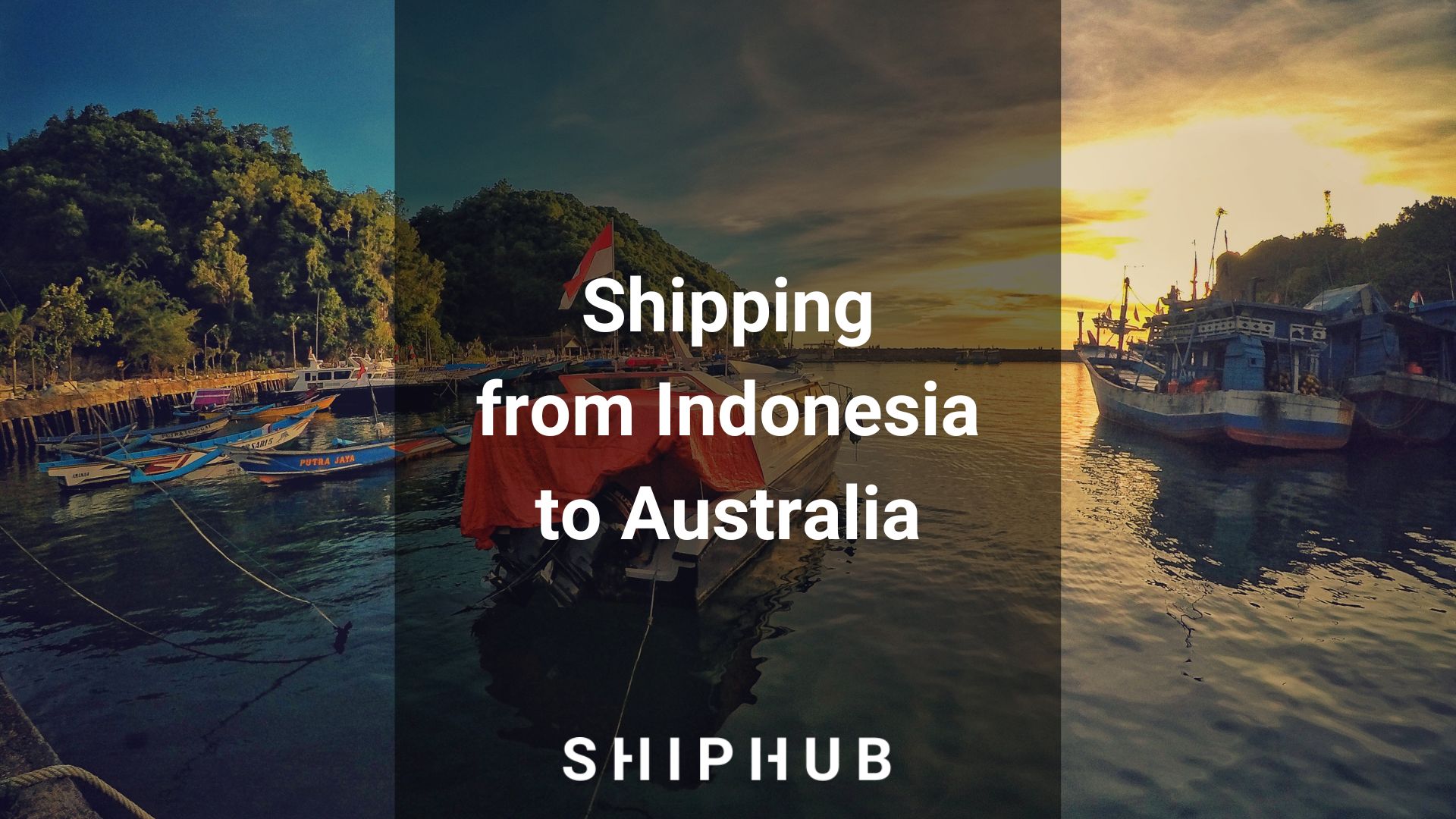The United States is Australia’s largest trade partner, and the number of imports has increased by 91% since 2005. If you’re interested in shipping from the US to Australia, you should familiarize yourself with the routes and transit times.
How to ship from the US to Australia?
Two options are available: shipping by sea and by air. Below is a breakdown of the pros and cons of these two methods.
Ocean shipping from the US to Australia
Sea freight is the most low-cost option for shipping products. The exact amount of time needed differs depending on whether the importer chose LCL (Less Than Container Load) or FCL (Full Container Load) shipping. LCL is for smaller shipments that will share a container with other cargo and sometimes take longer to arrive in comparison with FCL. FCL is recommended for larger shipments and is more likely to arrive on time.
Australia has many cargo ports, and some of the largest are located in Sydney, Melbourne, Fremantle (Perth), and Brisbane.
Here are examples of sea shipping routes and the transit time:
- San Francisco to Melbourne – 33 days LCL
- Oakland to Fremantle – 35 days FCL
- Long Beach to Sydney – 36 days FCL
- Los Angeles to Brisbane – 39 days FCL, 39 days LCL
- New York to Sydney – 45 days FCL, 44 days LCL

Airfreight from the US to Australia
Airfreight is the fastest way of shipping products between the countries. Its main disadvantage is the high price, but it can still be beneficial when the shipment is not large. This option is also recommended for high-value and fragile goods, as they’re usually handled with more care in airports rather than seaports.
Airfreight usually takes two to eight days to arrive in Australia. The specific amount needed depends on the destination. The United States and Australia are massive countries with plenty of airports, so these also should be chosen carefully.
The most significant airports in Australia are located in Sydney, Melbourne, Brisbane, Perth, and Adelaide.

Here are some example airfreight routes and how much time they take:
- Dallas to Perth – 3 days
- Los Angeles to Melbourne – 4 days
- Atlanta to Sydney – 5 days
- Boston to Brisbane – 6 days
- Chicago to Sydney – 7 days

Customs clearance in Australia
The customs clearance process is regarded as complicated; therefore, many importers decide to outsource it to the hired forwarder. Even if the importer isn’t solely responsible for the process, they will need to prepare some documents anyway. These are:
- commercial invoice
- packing list
- certificate of origin
- letter of credit or other chosen payment terms
- either an air waybill or a bill of lading, depending on the preferred method of shipping.
How much does it cost to ship cargo from the US to Australia?
The shipping cost depends on many different factors, such as the size of the cargo, whether it requires special handling, which method of shipping was chosen, and how urgent it is. To determine the costs of the whole process, you can fill in a form on ShipHub to receive a valuation personalized for your cargo. Here are some examples of filled forms:


Thanks to a long-lasting trade relationship between the United States and Australia, as well as a wide array of air and seaports, shipping cargo between the countries is quite simple. To properly prepare for the process, it’s best to research which method is best for the given type of cargo and which ports are most fit for the shortest shipping time.
Check out our guide on shipping from China to Australia.






